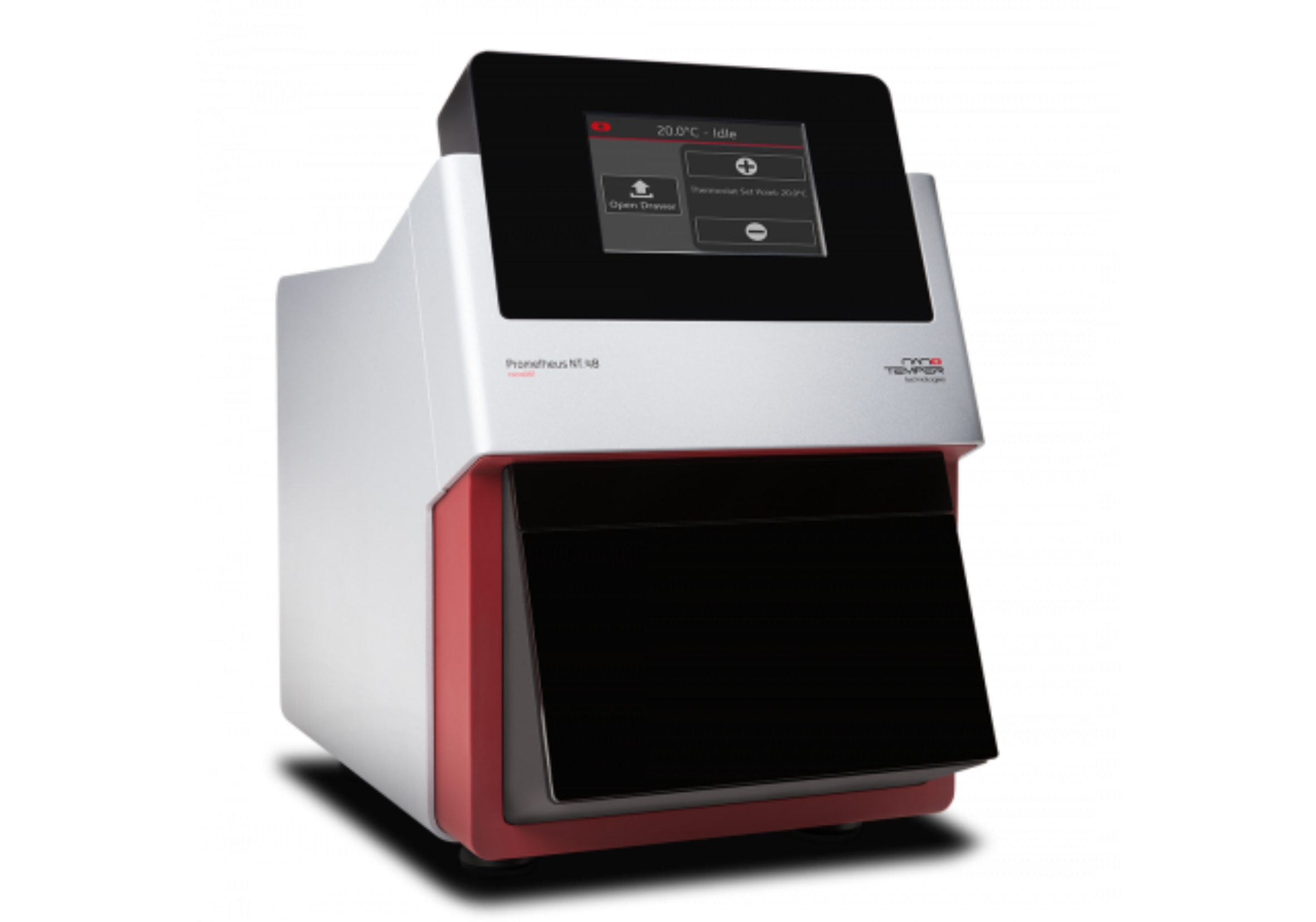Differential Scanning Fluorimetry (NanoDSF)
Application: Protein characterisation (stability, identity, folded state)
Instrument: Prometheus NT.48 (NanoTemper Technologies)
Location: VBC5, room E34

NanoDSF is a modified differential scanning fluorimetry method which monitors intrinsic tryptophan and tyrosine fluorescence as a function of temperature, time, or denaturant concentration. Tryptophan and tyrosine fluorescence intensity and wavelength maximum will vary as the local chemical environment changes, with significant changes occurring as buried or packed aromatic side chains become solvent exposed upon unfolding. NanoDSF measures fluorescence intensity at 350 nm and 330 nm and compares the ratio as a function of temperature or denaturant concentration.
NanoDSF can be used with a broad range of protein samples and has significantly higher throughput and lower sample consumption than DSC or CD. Free energies of folding and temperatures of unfolding can be estimated from measured NanoDSF experiments with proper data analysis fitting. NanoDSF is a useful tool to test protein stability in different conditions with a buffer screen. The only significant limitation is that the protein of interest must contain aromatic amino acids (tryptophan or tyrosine).
Measurements can be performed by the users themselves after having received a compulsory training.
Measurements can also be performed by ProTech staff upon request.


